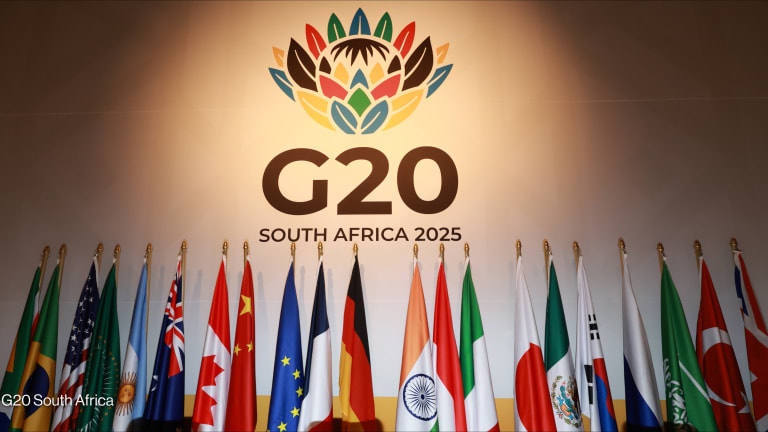
Last month, southwest Haiti was hit by an earthquake that caused devastation to the country’s inhabitants as well as its infrastructure. Among the victims: clean water.
Over 1,800 water supply systems have been reported as either damaged or destroyed. According to 2019 data, 35% of the country’s population already lacked access to safe drinking water.
“Haiti has always had water issues for many reasons but I think some people have fared better at some times but, after the earthquake, all of the towns in the southwest are experiencing water issues,” said Sandra Jean-Louis, an advocate for Haitian food systems. One of the primary rivers of the southern region, the Ravine du Sud, was blocked by a landslide amid the earthquake, as was water canal Avesac, which farmers rely on to water their fields, Jean-Louis said, who is from the commune of Camp-Perrin, Haiti, but lives in the U.S.
Tropical cyclone brings challenges for Haiti earthquake response
NGOs and the government are responding to a 7.2 magnitude earthquake that struck Haiti ahead of tropical depression Grace.
Given the lack of access to municipal water systems, most of the population in the affected area capture and store water when it rains, Dan Irvine, country director in Haiti at World Hope International, explained. “Unfortunately the earthquake was strong enough to shatter some of the cisterns and so they lost what they had accumulated and they can no longer save it when it does rain,” Irvine said, adding that springs and ravines in the area have also been disrupted.
Other water sources have also dried up, said Getro Deliscas, site manager of GivePower Foundation’s solar water farm on the Haitian island of LaGonâve.
Efforts to improve water access
Deliscas — whose home in Las Cayes, a southern port city of Haiti, was destroyed by the earthquake — explained that the solar water farm, built in 2020, is working to provide water for those hit hard on the mainland.
Supported by World Hope International, the farm utilizes solar energy and battery storage to power desalination systems housed in shipping containers. These purify 70,000 liters of seawater a day, making it clean and drinkable.
In 2019, prior to the project, Deliscas said the people of LaGonâve were drinking water contaminated with waste from toilets. Since then, the project has been able to meet islanders’ need for clean water and now the 10-person team is working to supply water beyond the island to the rest of the country amid the aftermath. As of Aug. 30, 249,817 liters had been delivered by boat to hard-hit areas.
“There’s chronic water shortages in some of these places and so they’re just exacerbated by a crisis like this,” Irvine said.
In Les Cayes, which is among the most impacted areas, an onsite chlorine generator in a health facility is also helping to plug the clean water gap.
Chlorine purifies water, making it safe to consume and water treatment technology company Aqua Research — with the support of the U.S. Agency for International Development — has five on-site chlorine generators in Haiti purifying water before it’s then bottled and distributed to other health centers.
“One of the things you don’t necessarily think about is we have to be really good at things like power as well. Typically generators and restoring power go hand-in-hand with water.”
— George Greene, CEO, Water MissionAquaResearch CEO Chris Dunston said the Les Cayes generator, having been “seismically supported,” was unaffected by the earthquake. It has since ramped up production of water to support health care facilities in the south west peninsula.
“Rapid response for drinking water is always critical in an earthquake, hurricane, or cyclone,” Dunston said. “But with the ability to generate chlorine on-site, as well as packaging for distribution, then that’s going to facilitate being able to have access to clean water as well as keeping health facilities safe.”
Much of the earthquake response has been local, Irvine said. Yet overseas nonprofits are also working to provide clean water amid relief efforts.
U.S.-based nonprofit Water With Blessings is distributing water filters. UNICEF shipped in an additional 65,000 water purification tablets, water tanks, and family hygiene kits. And Christian engineering charity Water Mission — which has 40 active community development projects in the impacted area — has deployed seven emergency water systems and mobilized engineers to help repair damaged systems. One of the emergency water system’s water is being trucked to three displacement camps and filling other NGOs’ water bladders, Water Mission’s CEO and President George Greene told Devex.

Sustaining such efforts beyond immediate relief
Going forward, Jean-Louis recommended water projects adopt sustainable approaches that support existing local resources rather than having people from overseas descend each time there’s a natural disaster.
Taking stock and knowing what resources exist on the ground would be the first step in doing that, she said. “Understand what exists in that place, how can we strengthen what’s on the ground so when something happens we don’t have to all come rushing back in, leaving people able to take care of themselves,” she said.
This is something Water Mission has tried to implement in its projects by embedding “seismic safety factors” into its construction of buildings. These include using confined masonry construction technology to better reinforce buildings. Things must also be built to last, Greene said. “The cost to do that the first time increases but is typically cheaper than doing it twice.”
3 takeaways from World Water Week 2021
Spanning five days and multiple time zones, these are the key messages that came out of World Water Week 2021.
Having in-country technical expertise to ensure generators and other key functions remain running is also key, Greene added.
“One of the things you don’t necessarily think about is we have to be really good at things like power as well. Typically generators and restoring power go hand-in-hand with water,” he said, adding that building this capacity has always been a focus for Water Mission and will continue to be so as it shifts from relief to recovery.
Both the solar water farm and chlorine generators were part of local projects put in place prior to the earthquake and will also continue to function afterward. The farm in fact wants to continue delivery beyond the island of LaGonâve, but Irvine said it will need further financial support to support the running of the delivery boats.
He explained that having the local population at the heart of the GivePower plant has contributed to sustainability. “The actual operation costs are actually being paid for by the population as they purchase the water but the cost is so low everyone can buy it,” he said.
Visit the WASH Works series for more coverage on water, sanitation, and hygiene — and importantly, how WASH efforts intersect with other development challenges. You can join the conversation using the hashtag #WASHWorks.









